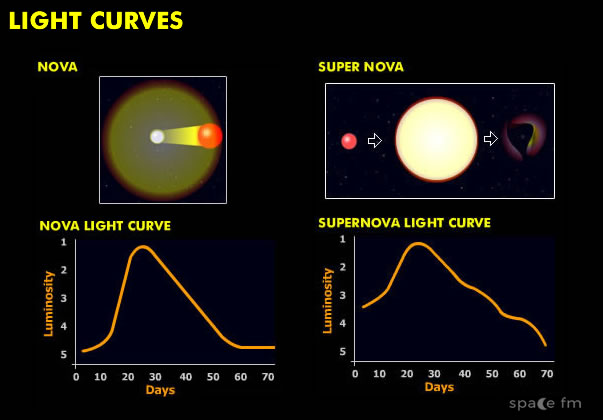Nova & Supernova Light Curves
13.14 - Understand the light curves of the following variable stars:d) novae and supernovae
In a binary system where one star is a white dwarf and the other is a large yellow or red giant, the dwarf has stronger gravity and pulls matter from the giant.
Eventually the dwarf will not be able to hold onto the excess solar material and explodes this matter off its surface. This build up takes place over a short period of time.
When it explodes, the luminosity increases by many magnitudes. The star reverts back to its former brightness after a period of 30 to 100 days.
Nova means 'New Star' in Latin. Novae is the plural of Nova.
A supernova is the brightest event in space. There are two types of supernova.
1 Similar to a nova where a dwarf takes material from a giant. This time the explosion destroys the dwarf. Typically, this takes place when the mass of the white dwarf is over 1.4 solar masses.
2 When a star has a mass greater than 8 solar masses. The red giant swells so much it collapses in on itself. These are dramatic events as once they explode the core forms a neutron star or a black hole.
The light curve shows a drastic increase in brightness before receding to a small luminance after a few months.
A planetary nebula is usually seen in the region of a supernova for years, sometimes centuries afterwards.
Supernovae is the plural of Supernova.
Tools
Links
-
Imagine the Universe Light curves
-
Peoria Astronomical Society Binary stars, light curves and spectroscopic

 | © All Rights Reserved |
| © All Rights Reserved |